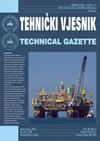Analysis on Supply Chain Risk Factors of Prefabricated Buildings Using AHP-DEMATEL-ISM Model
IF 1.4
4区 工程技术
Q3 ENGINEERING, MULTIDISCIPLINARY
引用次数: 0
Abstract
: Given the numerous participants in the supply chain of prefabricated buildings and the great difficulty in improving risk management and control level, influencing factors through the literature review method were identified. Then, 7 first-level indexes and 23 second-level indexes were extracted. An influence index system for supply chain risks of prefabricated buildings was established. Comprehensively considering the importance and correlation of various influencing factors, the AHP-DEMATEL (Analytic Hierarchy Process and Decision-making Trial and Evaluation Laboratory) combined model was constructed, which solved the one-sided problem of the weight result of a single model. Then, the ISM (Interpretative Structural Modelling) model could be used to show the characteristics of the structural relationship of influencing factors hierarchically, and the fundamental supply chain risk factors were more accurately and clearly explored using the AHP-DEMATEL-ISM model. Results show that: (1) Logistics transportation distance, damage to prefabricated components during transportation, and unreasonable control of assembly period are the fundamental factors affecting the risk of prefabricated buildings, among which logistics transportation distance and damage to prefabricated components during transportation are the resulting factors, and the unreasonable control of the assembly period is the causal factor, but the factor weight is low because of the difficulty in short-term improvement. (2) Component production technology and equipment, transportation distance, and punctuality of product supply account for a high weight in the supply chain risk assessment index system of prefabricated buildings. (3) A total of 11 factors, such as inconformity of product design and standard, immature design technology level, component production technology and equipment, and quality of purchased materials, affect the supply chain risk of prefabricated buildings and are also causal factors with high weights. Conclusions obtained in the study provide a theoretical basis for the supply chain risk control of prefabricated buildings to a certain extent and also present a new perspective for the supply chain risk assessment of prefabricated buildings.基于AHP-DEMATEL-ISM模型的装配式建筑供应链风险因素分析
:鉴于装配式建筑供应链参与者众多,风险管控水平提升难度较大,通过文献综述法确定影响因素。然后提取出7个一级指标和23个二级指标。建立了装配式建筑供应链风险影响指标体系。综合考虑各影响因素的重要性和相关性,构建了AHP-DEMATEL (Analytic Hierarchy Process and Decision-making Trial and Evaluation Laboratory)组合模型,解决了单一模型权重结果片面的问题。然后,可以使用ISM (Interpretative Structural modeling)模型分层显示影响因素的结构关系特征,使用AHP-DEMATEL-ISM模型更准确、清晰地探索供应链的基础风险因素。结果表明:(1)物流运输距离、运输过程中预制构件损坏、装配周期控制不合理是影响装配式建筑风险的根本因素,其中物流运输距离、运输过程中预制构件损坏是结果因素,装配周期控制不合理是因果因素;但由于短期内难以改善,因子权重较低。(2)构件生产技术与设备、运输距离、产品供货准时性在装配式建筑供应链风险评价指标体系中占有较高权重。(3)影响装配式建筑供应链风险的因素有产品设计与标准不符合、设计技术水平不成熟、构件生产技术与设备、采购材料质量等11个因素,也是权重较高的因果因素。研究得出的结论在一定程度上为装配式建筑供应链风险控制提供了理论依据,也为装配式建筑供应链风险评估提供了新的视角。
本文章由计算机程序翻译,如有差异,请以英文原文为准。
求助全文
约1分钟内获得全文
求助全文
来源期刊

Tehnicki Vjesnik-Technical Gazette
ENGINEERING, MULTIDISCIPLINARY-
CiteScore
1.90
自引率
11.10%
发文量
270
审稿时长
12.6 months
期刊介绍:
The journal TEHNIČKI VJESNIK - TECHNICAL GAZETTE publishes scientific and professional papers in the area of technical sciences (mostly from mechanical, electrical and civil engineering, and also from their boundary areas).
All articles have undergone peer review and upon acceptance are permanently free of all restrictions on access, for everyone to read and download.
For all articles authors will be asked to pay a publication fee prior to the article appearing in the journal. However, this fee only to be paid after the article has been positively reviewed and accepted for publishing. All details can be seen at http://www.tehnicki-vjesnik.com/web/public/page
First year of publication: 1994
Frequency (annually): 6
 求助内容:
求助内容: 应助结果提醒方式:
应助结果提醒方式:


